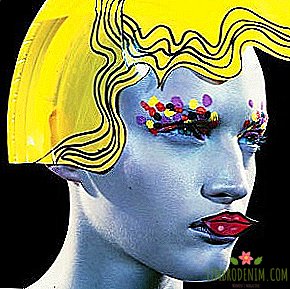How architecture solves social problems: 10 new projects
Venice Architecture Biennale It takes place every even year, lasts six months and gathers participants from all over the world in the pavilions of the Venetian gardens and the nearby Arsenal. This year's curator was the Chilean architect and Pritzker Prize winner Alejandro Aravena. In addition to the construction of large-scale buildings of universities, innovation centers and schools, Aravena devoted his career to the design of social housing and the reconstruction of cities after natural disasters. It is not surprising that the theme of the Biennale under his supervision was the role of architects in improving the quality of life of people around the world and, in particular, in solving acute social problems. As the President of the Venice Biennale, Paolo Baratta, said at the opening, the time for such a biennale is the most appropriate: "We are all gathered here to show our involvement, desire to help in crisis situations and return architecture to people."
It would seem, why return architecture to people if it was originally in their hands anyway? It is clear that without architecture there would be neither hospitals in which people are born, nor houses in which they later live, nor churches and mosques where funeral ceremonies are performed on them. Architecture forms the space around us, outlines the framework in which we exist, predetermines our development. Without architects who collect all the opposing forces together and give a reliable result, we would all be three little pigs from a fairy tale whose homes can be easily blown away. Setting the theme of the Biennale - "Reporting from the Front", that is, literally "Reporting from the Front," Aravena asks participants and guests to pay attention to the work of architects, who over the past decades have been more interested in private gain, rather than the living conditions of the people around.
He seems to be saying: “Guys, architects are not only important aunts and uncles who negotiate with rich sheikhs of Qatar somewhere in London. Architects are people who can bring their experience and knowledge to solving those stories where other disciplines themselves can't handle it. " At the same time, Aravena asks not to understand him literally: this is not a “Biennale for the Poor” and not a “Humanitarian Biennale”, as the media quickly called it — this is the Biennale of ideas on how to fight for the quality of life. As a result, most of the projects presented are aimed at solving acute social problems - from the Norman Foster drones stations in Africa to the floating school in the village of Makoko, young NLE architects. We talk about the most important and interesting of them.

London-based Forensic Architecture is investigating war crimes, political conflicts, and human rights abuses. This interdisciplinary team, consisting of architects, lawyers, journalists and scientists, uses architectural analysis, modeling and animation to search for evidence, which is then used in international court and UN investigations. At the biennale of the agency presented four recent projects. One of them is an investigation into the attack of civilian drones in Pakistan. Based on the video of the witness taken on a mobile phone and architectural modeling techniques, the Forensic Architecture team was able to determine the exact location of the building where the shell hit, the trajectory of its fall, and even the name of the manufacturer.

Pavilion Peru explores how to preserve the culture of the ethnic communities of the Amazon River by building schools in isolated villages. It is an increase in the level of education, according to the curators of the exhibition “Our Amazon Frontline”, which will enable them to gain rare knowledge of indigenous peoples about the Amazon rainforest and apply their resources in medicine and nutrition. Their education development plan in the Amazon is called "Plan Selva". In addition to building hundreds of schools in remote areas, it also includes the development of a new educational program, in the center of which is the preservation of ethnic languages and unique cultures of this region.

The German Pavilion this year raises a logical and self-evident question - how to integrate into the society all the refugees who have come to the country lately. The exhibition "Making Heimat" explores how migrant areas help them to quickly adapt to the new environment and which technology planners should use to speed up this process and make it as painless as possible for refugees. Among other things, the exhibition shows how properly designed road infrastructure, proximity to jobs, affordable housing, and the construction of new schools can help. The main message of the entire project - tolerance towards migrants - was also expressed in architecture. In the bearing walls of the building, new passages were pierced, which visually opened the pavilion and turned it into a living metaphor of the open Germany.

The Home Economics exhibition of the UK Pavilion presents five new residential space scenarios in megalopolises. "The construction of apartments, the curators of the pavilion explain, should reflect the different amount of time we spend in them. Someone stays in one place for only an hour, and someone for decades." Thus, the space of the apartment "Clock" is the most flexible, because it involves a constant change of people living in it: pieces of furniture can be transformed, and the wardrobe with clothes, like the clothes themselves, are common. The apartment space "Days" focuses on the mobility of the modern city dweller and therefore offers to hide in inflatable areas, which, in theory, you can carry with you from city to city and feel at home anywhere in the world. “Months,” “Years,” and “Decades” rely on a common idea: over time, we will have less space and money, and patience to cohabit with a dozen neighbors — more and more.

The Losing Myself exhibition in the Ireland Pavilion tells the story of people with Alzheimer's disease. This disease gradually deprives a person of the ability to remember his location and navigate in space, which is of exceptional importance for architecture. Curators Niall McCleclyn and Yeoria Manolopoulou on the exposition site and in Arsenal in Venice present an account of their extensive research on the practices and methods of designing houses for people with Alzheimer's and talk about the principles that architects should take into account in their work. The installation itself is an interactive map of the rehabilitation center in Dublin, showing its building through the eyes of a patient with Alzheimer's disease.

Gabinete de Arquitectura from Paraguay won the Golden Lion Biennale among architectural offices for its parabolic brick arch, presented in the first hall of the central pavilion. The arch itself is an illustration of the idea of how to build quickly, cheaply, and most importantly, qualitatively with a lack of resources. The authors of the project propose to play with various simple methods: pour in mortar between bricks lying on the ground, or folding bricks into a three-dimensional bearing panel. At the same time, unskilled specialists can easily be involved in the work. Thus, Paraguayan architects kill two birds with one stone at a time: the housing shortage and the growing unemployment.

The gold medalist of the Biennale among national participants, the exhibition "Unfinished" of the Spanish Pavilion begins with photos of frozen projects, suspended construction projects, and people living in unfinished houses. The curators Inaki Carnicero and Carlos Quintans tell the story of rethinking architecture in a country that experienced a construction boom first and then an economic crisis. To this end, they selected 80 projects illustrating how architects, moving away from the old principles, adapt to the current economic situation and begin to apply new materials and practices in their work. Among other things, you can see how the Spanish architects decided to redesign the building of the former cinema for living space, what materials were used to reconstruct the old factory at the least cost, and what difficulties arose when converting an abandoned garage into an office.

Pavilion Western Sahara - the first in the history of the architectural biennale dedicated to the nation in exile. His curator, architect Manuel Hertz, tells the story of the Saharavi people who have been living in camps in Algeria for more than forty years. Saharavi declared the independence of Western Sahara from Morocco in 1976, and since then 40 states have recognized this status. Sakharavi representatives consider themselves independent, but in fact they have been living in refugee status for almost half a century. They were forced to develop and build all the necessary institutions, inventing techniques of desert urban planning on the go. In the Rabuni camp, which is considered the capital, there is a school, a hospital, and even a parliament building. The history of architecture in the camps of this people is told in the pavilion through patterns of carpets woven by representatives of the National Union of Women Saharavi.

The curator of the pavilion of the Netherlands Malkit Shoshan is known for researching the architecture of military bases. In the exhibition "BLUE: Architecture of UN Peacekeeping Missions" she talks about the participation of the Netherlands in UN peacekeeping missions in Africa. Inside the UN, there is the principle of building military bases, which relies on three aspects: protection, diplomacy and development. Shoshan suggests adding a fourth — design — and calls for the importance of including local communities in the process. The exhibition under her curator shows how a properly designed base helps to avoid segregation between peacekeepers and residents around, contributes to regional development and the country's early recovery from the economic crisis caused by the conflict. As an example, the layout and history of peacekeepers, engineers, journalists and local residents from the Kamp-Castor base in Gao, Mali is displayed.

The "The Architectural Imagination" exhibition in the US Pavilion tells of the bankrupt city of Detroit as a result of the financial crisis. Curators of the pavilion Cynthia Davidson and Monica Ponce de Lyon invited 22 American architectural bureaus and distributed them among four urban sites. As a result, in the historic residential area of Mexican migrants, architects have designed a hinged area that connects with the rest of the urban facilities through suspended gardens, bridges and passages. An abandoned automobile enterprise, among other things, was asked to retrain the destroyed building structures in the building materials processing plant. A project of the future university and cultural center appeared on the territory of the old city market, and a continuation of the metro line on the wasteland between the post office and the river coast. All these projects are raging young imagination aimed not only to breathe life into the already seemingly deceased Detroit, but also to become an example for similar stories in other countries of the world.
Photo: Forensic Architecture, Biennale di Venezia, Making Heimat, The British Council, Hin Nieuwe Instituut, Unfinished, National Pavilion of the Sahara / Iwan Baan, Lez Barker / ArtAV




